It was an unprecedented night of terror which brought the Second World War to Dundee’s doorstep.
Bonfire Night in 1940 was the scene of a series of German attacks which left the city shaken and wiped out one tenement block in Rosefield Street.
These pictures from the DC Thomson archives testify to the devastation caused by the Luftwaffe as bombs rained down on the city.
Bomb strikes across Dundee
Dundee stockpiled coffins for the mass casualties which were expected during the war.
That’s how bad things were expected to be, although, when the bombers did eventually strike, it was mercifully not to the devastating level of Peterhead or Aberdeen.
When the German bombers struck Scotland they were often striking ‘blind’ without the use of radars to tell them which towns they were attacking.
Any details of the attacks in newspaper reports therefore might have allowed the Nazi hierarchy to piece together information about the local geography.
To avoid this, newspapers such as The Courier and the Evening Telegraph would keep exact details of the bombings vague to hide locations from the enemy.
On November 4 1940, the Tele told how bombs were dropped in “a large town” along the north-east coast of Scotland – which many suspected to be Dundee.
On November 5 1940, two high-explosive bombs fell at Drumgeith in the city.
Two 1,000kg explosives were dropped shortly after elsewhere in Dundee.
One exploded 10 yards from the south entrance to Baxter Park.
The other buried itself in soft ground next to an occupied air-raid shelter at the back of nearby Taybank Works.
Thankfully nobody was injured but the worst was yet to come when a tenement block on Rosefield Street received a direct hit.
The Rosefield Street bombing
The bomb ripped right through the roof of the building at Rosefield Street and only exploded when it reached the bottom floor.
Twelve people who were trapped managed to be rescued.
But two people were killed in the disaster.
Among them was Mrs Mary Ann Laing, who was 64.
She was killed by an iron range falling through from the floor above.
Her husband John, 68, was badly injured.
David Robertson, foreman of a voluntary rescue party, told the Tele afterwards that Mr Laing was trapped in his kitchen on the first floor after the bombing.
Mr Robertson said: “When the building collapsed, about two dozen heavy joists must have fallen and in doing so seem to have pinned Mr Laing down.
“Everything had to be sawn through before we could get to him.
“We were talking to him right from the start as soon as we located him, for he was still conscious and we could see his head.
World War II bomb site in Rosefield Street : pic.twitter.com/CTeuJkZzYL
— Cllrs Fraser Macpherson & Michael Crichton (@dundeewestend) July 1, 2015
“A boy called Greig was brought out at the same time.
“The doctor had given Mr Laing an injection of morphia before we lifted him, and he complained about pains in his legs.
“It was remarkable that Mr Laing and the boy Greig were not both crushed, but some of the joists must have held up above them.”
Residents returned to the building after the bombing to retrieve belongings.
Amazingly, despite the carnage, one young lad went back to find his goldfish and found it swimming about in its bowl, which was totally intact, before taking it away.
Eyewitness account
In 2010, Courier reader David Lowson provided the newspaper with his eyewitness account of the Rosefield Bomb in a letter to the Craigie column.
He said: “I lived almost opposite the tenement which was demolished that night.
“I was returning from my job in Blackness Foundry at 8pm as the string of bombs fell.
“I remember lying on the ground during the blasts and then, as I reached the top of Rosefield Street, slithering in the rubble scattered on the cobbles.
“My home was at Number 10, which escaped; windows blown in, of course, and much debris in rooms facing the street.
“My father had been tossed from his seat in a room to the rear and, though severely shaken, seemed to have escaped serious injury; but he died before the end of the month from peritonitis.
“My twin brother and I were aged 20 at the time – you can imagine how shattered we were by these experiences.”
Another eyewitness account was given by George Wilmott in 2015.
“I lived on the top floor of Rosefield tenement with my dad, mum and sister Dot.
“My elder brothers were away at the war.
“My dad was in the Auxiliary Fire Service, so he was out on duty and my sister was at the cinema.
“I remember it so clearly.
“My mum was always very organised, very sensible, and she made me memorise my medical registration number in case of emergencies.
“I’d also been taught that every night I had to roll all my clothes into a tight bundle and place them next to my bed.
“So there I was, sitting in front of the fire when the first bomb came down near the picture house.
“The second landed near the electricity generating station.
“The third hit us.”
Brave Dundonians
George’s dad, Thomas, a First World War veteran, was serving at a fire station on the Perth Road.
His crew were among the first on the scene — and the first people he had to rescue were his own family.
George added: “My dad came and got us.
“All the pictures show the building after it had collapsed, but it stood for long enough for us to get out.
“Dad said ‘it’s cracking’ as we made our way down the close.
“But then my mum remembered a tin box that had all the insurance documents so she went back up and got it.”
Shocked residents congregated on Blackness Road as fire and rescue services searched the wrecked tenement.
No government support after bombing
Twenty-four families were left homeless after the Rosefield Street bombing.
The fact Dundee didn’t suffer further damage was a surprise given its prime position on the Tay which may have made it a prime target for enemy bombers.
Similar areas along the Clyde were torn apart by explosives during the war.
However, despite the city suffering less damage than other Scottish cities, the effects of the bombings were still powerfully felt as those who had been left homeless at that time received no support from the government when it came to finding a new place to live.
George said: “Fortunately my mum knew a lady at the top of Ure Street.
“We moved into her attic for the time being.
“Then we got another attic on Hawkhill opposite the Princess Cinema and we were there for a long time.
“It was a miserable Christmas indeed.”
The family were eventually re-housed at a new house in Fyffe Street.
The Rosefield bomb-site was cleared after the bombing – but not rebuilt until the 1960s.
The replacement buildings still stand today, slightly different in colour to the older ones as a reminder of Dundee’s own “longest night” over 80 years ago.
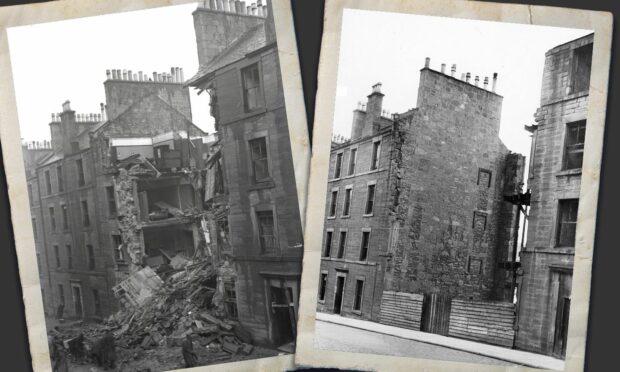
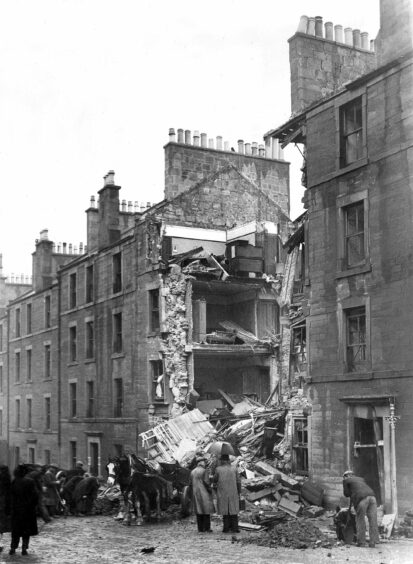
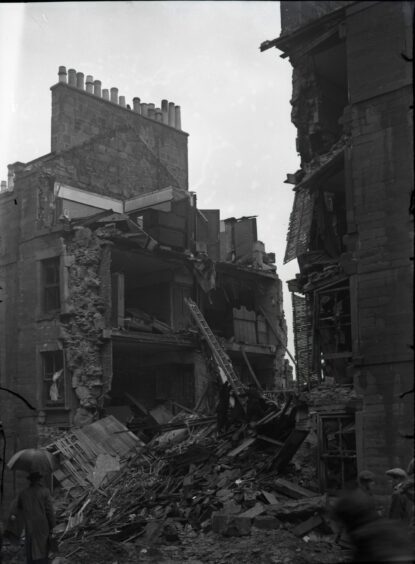
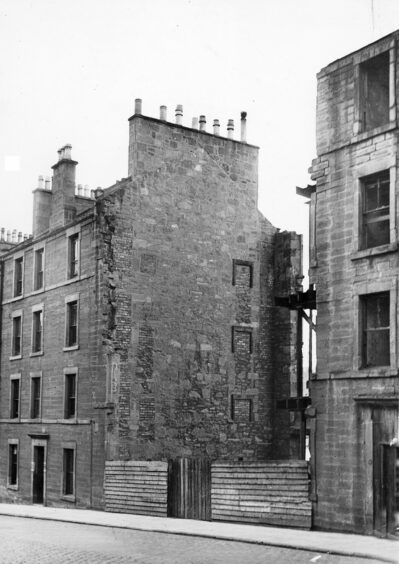
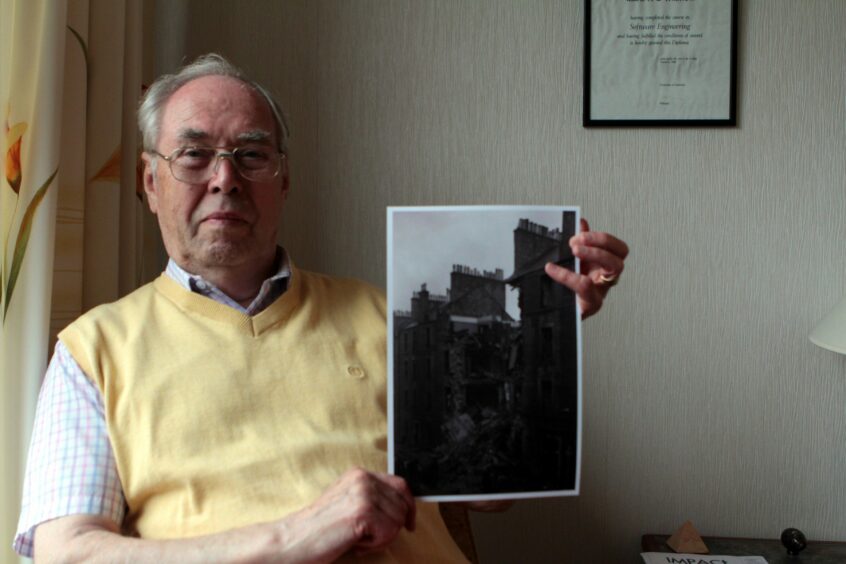
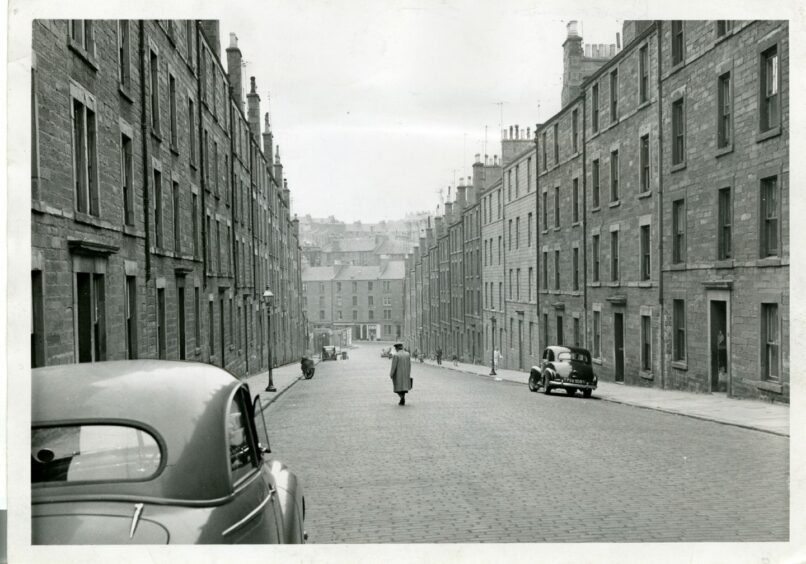
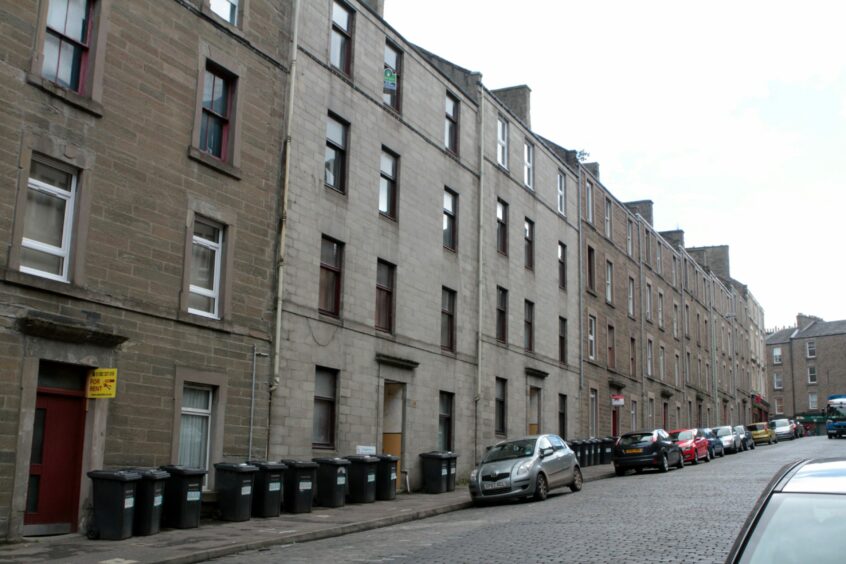










Conversation